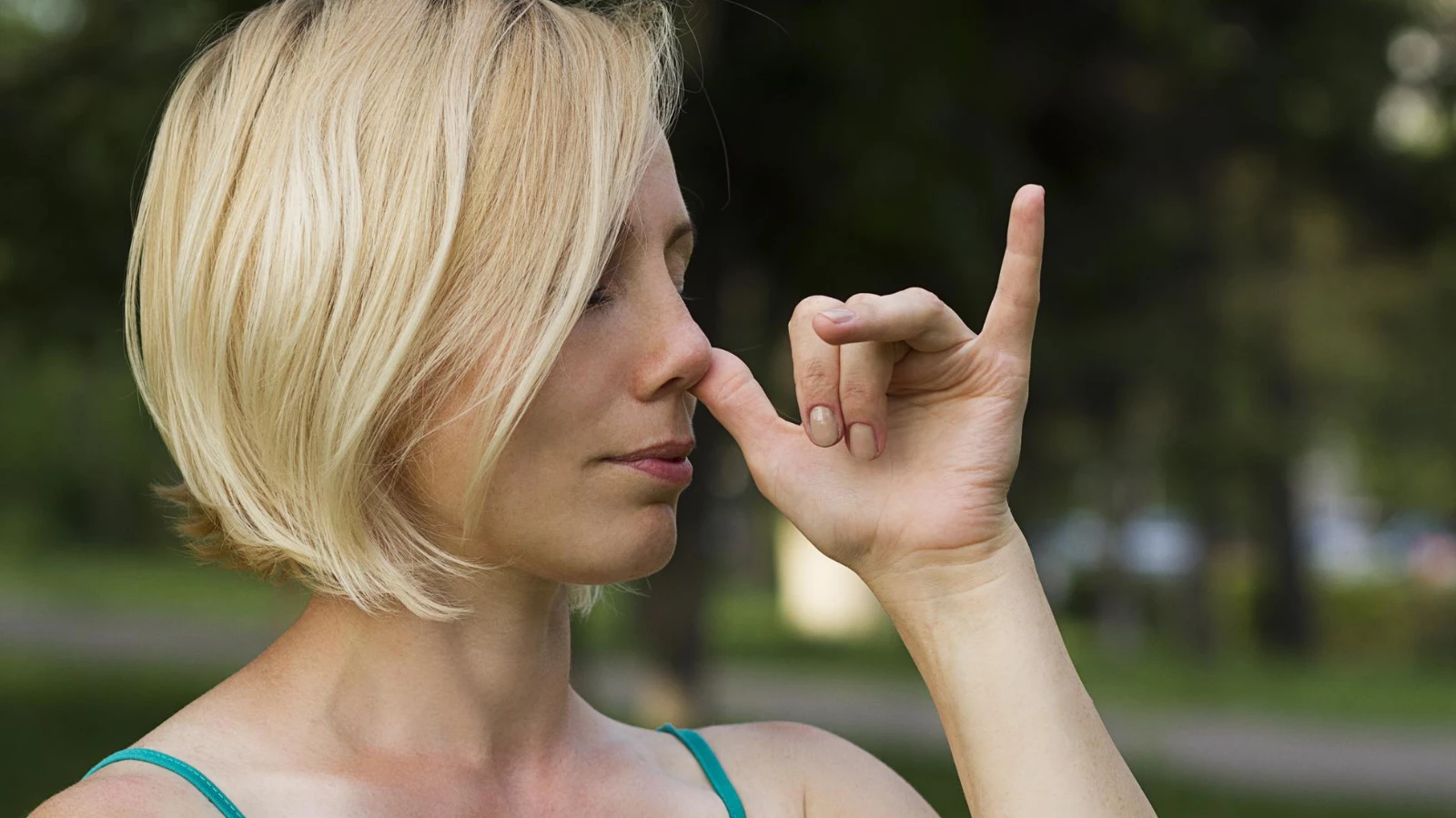Control Your Breath to Calm Your Mind: 4 Pranayama Practices to Help Relieve Anxiety

Pranayama is a beautiful practice of working with the flow of energy in our bodies. Most dissect the word pranayama as coming from the two roots “prana” and “yama.” Prana translates as “life-force energy” and yama translates as “control or restraint.” However, some scholars dissect the word as “prana” and “ayama.” In Sanskrit, the prefix typically negates the meaning of a word. So in this context, ayama translates as the opposite of control or restraint, roughly something along the lines of “total freedom.”
You can choose whichever translation resonates with you better when you practice pranayama, but however you look at it, pranayama is intended to move energy. Breath is often used interchangeably with prana and there’s a good reason for that. While prana may extend beyond our breath, there is little doubt that, in us, breath sustains life.
There is ample research nowadays that shows the positive effects that pranayama can have on our stress levels. This is likely due to a number of different factors, including an acute awareness of the present moment, stimulation of the vagus nerve and the parasympathetic nervous system (the rest-and-digest response), mindful awareness of one of our body’s most crucial functions, and so much more.
4 Pranayama Techniques to Help Relieve Stress and Anxiety

These are a few of the many different pranayama practices that can help to soothe your body, mind, and nervous system.
1. Ujjayi (Victorious Breath)
This is often called “warming breath” or “oceanic breath.” This slow, steady, and controlled breathing technique is believed to warm the body and emulate the ebb and flow of waves. Just like the hypnotic rhythm of waves, ujjayi can be extremely relaxing due to its mesmerizing beat.
How to Prepare for Ujjayi Breathing:
- Draw one hand in front of your mouth and imagine your hand is a mirror that you are trying to fog up with your breath.
- Inhale deeply through your nose.
- Open your mouth as you exhale and release a sighing sound.
- Feel the warmth of your breath against your hand.
- Continue with this pattern until you feel comfortable with the technique.
- Then, close your mouth, relax your hand, and continue to practice.
How to Practice Ujjayi:
- Breathe in and out through your nose.
- Maintain a subtle constriction in the back of your throat as if you were whispering or sighing to slow the movement of air in your throat and create a warming sensation within your breath.
2. Chandra Bhedana (Moon Channel Breath)
This roughly translates to “moon-piercing breath.” This is practiced by obstructing the right nostril and breathing both in and out through your “moon channel”—also known as your left nostril. In yogic subtle anatomy, the left nostril is considered to be the moon channel because this is where the ida nadi (the lunar energy channel) terminates.
This practice is intended to stimulate the parasympathetic nervous system while also connecting you with your soft, lunar, yin side.
How to Practice Chandra Bhedana:
- Lightly rest your right thumb on your right nostril.
- Take a full, normal, deep breath.
- Press into your thumb to close off your right nostril.
- Inhale and exhale slowly and mindfully through your left nostril.
3. Sheetali (Cooling Breath)
Sheetali roughly translates to “cooling.” This technique is meant to cool the breath, the body, and the mind. It requires the ability to roll the tongue, which is arguably a genetic trait, so if you are unable to roll your tongue, then you can easily substitute the next breath practice instead. If you are able to roll your tongue, this simple practice slows the flow of air that is entering and exiting from your body to create a soothing effect on your nervous system.
How to Practice Sheetali:
- Open your mouth and stick your tongue out.
- Fold the edges of your tongue over themselves to create a “rolled” shape.
- Imagine the hole within your tongue as a straw and “sip” air in and out through this straw-like shape you’ve created with your tongue.
- Breathe slowly and mindfully in this way.
4. Sheetkari (Hissing Breath)
This practice creates a hissing sound and is also said to be a cooling breath technique. Again, by mindfully drawing awareness to the breath, sheetkari forces you to slow down and breathe deeply, positively contributing to your nervous system’s response.
How to Practice Sheetkari:
- Close your mouth and draw your teeth to touch.
- Keep your teeth together and open your lips
- Slowly breathe both in and out with a hissing sound through your closed teeth.
The Power of Pranayama to Manage Stress and Anxiety
Even if you don’t believe in the flow of pranic energy, breathwork can still affect you deeply on a physical and/or psychological level. And there is little harm in pausing for a mindful moment in your day to listen to or control your breath.
With nothing to lose and so much to gain, pranayama may be a practice worth employing to help manage stress, anxiety, or just the simple ups and downs of life that we all face.
Also, read...
Teaching Svadhyaya: 3 Ways to Encourage Self-Study in Yoga
In Celebration of Gray-Haired Yoga – Busting the Myth of the Yoga Body
Related courses

Leah Sugerman is a yoga teacher, writer, and passionate world traveler. An eternally grateful student, she has trained in countless schools and traditions of the practice. She teaches a fusion of the styles she has studied with a strong emphasis on breath, alignment, and anatomical integrity. Leah teaches workshops, retreats, and trainings, both internationally and online. For more information, visit www.leahsugerman.com.
- https://www.researchgate.net/publication/264939565_Effect_of_pranayama_on_rate_pressure_product_in_mild_hypertensives
- https://www.ncbi.nlm.nih.gov/pubmed/19534616
- https://www.ncbi.nlm.nih.gov/pubmed/15347862



